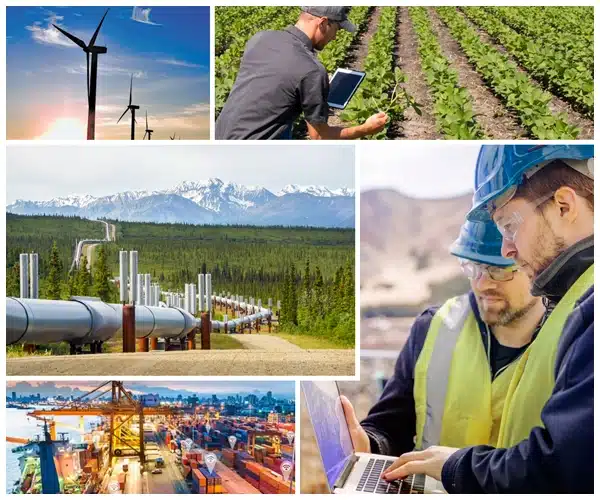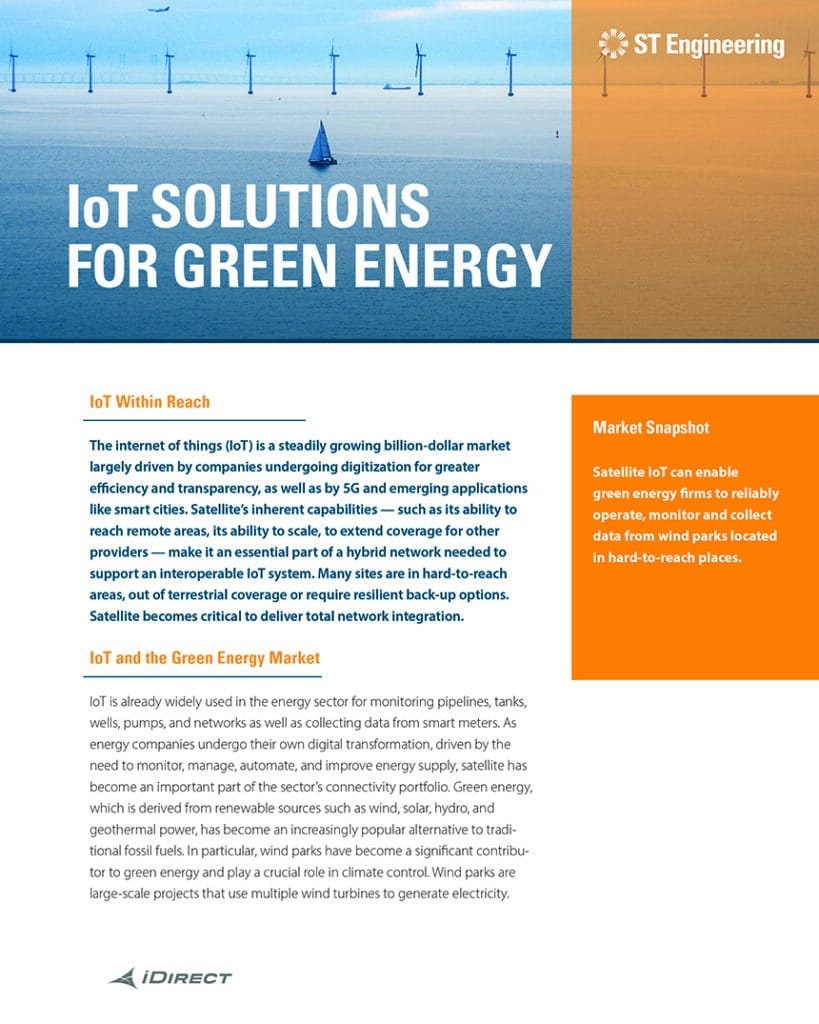Digital transformation is happening everywhere, fueling the demand for the Internet of Things (IoT) to connect software-enabled smart devices required to enable greater efficiency and transparency across markets. 5G will further accelerate IoT implementation across an array of converged platforms.
Connectivity is essential for IoT applications to collect data of all sorts from sensors to surveillance and then turn it into actionable business and operational insights. Affordable, ultra-reliable, and low latency are top requirements to field a satellite IoT offering.
Service providers recognize the potential increased market share if they can successfully enable affordable, ultra-reliable, low latency satellite IoT. Today, service providers can unlock the opportunity of satellite IoT on their existing ST Engineering iDirect hub architecture. Learn more about the technology to get started. Or learn more about the insatiable market opportunities here.

